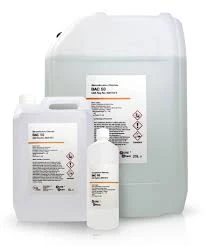flocculant chemicals for water treatment
The Role of Flocculant Chemicals in Water Treatment
Water is an essential resource for life, yet the increasing demand and pollution levels pose significant challenges to its availability and quality. One effective method for treating water, particularly wastewater, is the use of flocculant chemicals. These substances play a crucial role in the coagulation and flocculation processes, which are fundamental in improving water quality through the removal of suspended solids, clarifying water, and ensuring the effective treatment of effluents.
Flocculants are substances that promote the agglomeration of fine particles into larger aggregates or “flocs.” When added to water, flocculants destabilize the charged particles, allowing them to collide and bond together, forming larger clusters that can be easily removed through sedimentation or filtration. This process is essential in various water treatment scenarios, including municipal water supply, industrial wastewater treatment, and even in swimming pool maintenance.
There are several types of flocculants, each with specific applications and characteristics. The most commonly used flocculants are polymers, which can be synthetic or natural. Synthetic polymers, such as polyacrylamide, are widely employed due to their effectiveness in various pH levels and their ability to handle a wide range of contaminants. Natural flocculants, derived from plant or animal sources, include substances like chitosan and alginate. Although they may be less potent than synthetic options, natural flocculants are often preferred in applications where environmental impact is a concern.
flocculant chemicals for water treatment

The selection of the appropriate flocculant depends on several factors, including the type of contaminants present in the water, the desired final water quality, and the specific treatment process being employed. For instance, in treating industrial wastewater that contains heavy metals, specialized flocculants may be necessary to effectively bind and remove these toxic substances. Conversely, in treating drinking water, a more neutral flocculant that does not impart harmful byproducts or taste is preferred.
One significant advantage of using flocculants in water treatment is the ability to enhance the efficiency of the sedimentation process. By promoting the rapid formation of larger flocs, water treatment plants can achieve clearer effluent more quickly, reducing the need for extensive filtration and decreasing overall treatment costs. Moreover, the improved settling rates of flocs can lead to a reduction in the volume of sludge that needs to be disposed of, which is an essential consideration given the increasing regulations surrounding waste disposal.
Despite the benefits, the use of flocculants must be managed carefully. Overdosing can lead to the formation of excessive sludge or can introduce harmful substances into the treated water. Therefore, proper dosage calculations and monitoring are crucial to ensure the effective and safe application of these chemicals. Moreover, ongoing research is focused on developing more biodegradable and eco-friendly flocculants that minimize any potential impact on the environment.
In conclusion, flocculant chemicals are indispensable tools in modern water treatment processes. Their ability to promote the agglomeration of particles enhances the efficiency of water clarification, enabling the production of safe and clean water for various uses. As water quality continues to be a pressing global issue, the role of effective and sustainable flocculants will become increasingly vital in meeting our water treatment needs and ensuring a healthier environment for future generations.
-
Water Treatment with Flocculant Water TreatmentNewsJun.12,2025
-
Polymaleic AnhydrideNewsJun.12,2025
-
Polyaspartic AcidNewsJun.12,2025
-
Enhance Industrial Processes with IsothiazolinonesNewsJun.12,2025
-
Enhance Industrial Processes with PBTCA SolutionsNewsJun.12,2025
-
Dodecyldimethylbenzylammonium Chloride SolutionsNewsJun.12,2025





